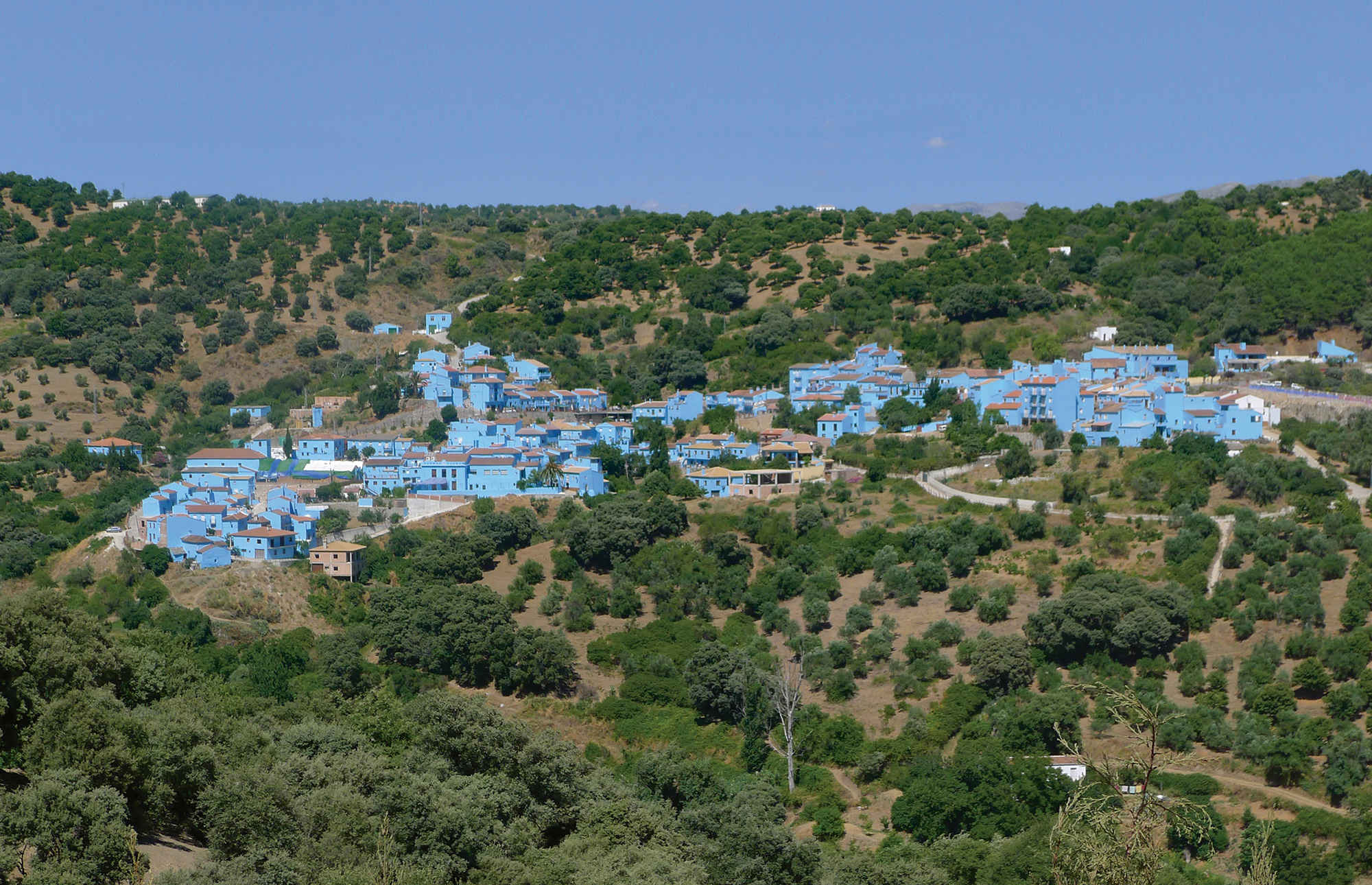Pitufo Blues
What the Smurfs did to Júzcar
Jonathan Allen

In Gabriel García Márquez’s novel One Hundred Years of Solitude, José Arcadio Buendía—the founder of the book’s utopic jungle settlement Macondo—comes into conflict with the town’s new magistrate, Don Apolinar Moscote. The latter has been appointed by the national conservative government to keep an eye on affairs in Buendía’s contentedly self-governing community. The magistrate’s first act is to issue an order stating that all of the town’s houses be painted blue in celebration of the anniversary of national independence. “If you’ve come to cause disorder by making the people paint their houses blue,” Buendía retorts, “you can pick up your junk and go back to where you came from. Because my house is going to be white, like a dove.”[1]
The mountainside village of Júzcar is one of the many pueblos blancos that lace the Serranía de Ronda in the Malaga region of southern Spain. The “white villages” are so named because of the sanitizing and sun-reflecting limestone whitewash, known locally as cal, traditionally applied to the surfaces of most buildings. Júzcar claims to be the birthplace of Andalusia’s “Robin Hood,” the Christian rebel Umar ibn Hafsun (ca. 850–917), who gained considerable regional power during the Islamic Umayyad occupation of the Iberian peninsula by stirring resistance to the taxes that the Muslim occupiers exacted upon ostracized (although tolerated) Christians. The presence of an accepted Jewish population in the village can be confirmed in records pertaining to the area’s thriving silk industry immediately following the reconquista, whereupon Júzcar is thought to have become a slave colony at the request of the Catholic monarchs Ferdinand and Isabella. (To this day, Júzcarians are known locally as moriscos, or Moors). A royally sanctioned tin mine and factory flourished nearby in the early eighteenth century, and with the Napoleonic invasion in the early nineteenth century, Júzcar was granted the title villa muy noble y fidelísima by the restored Spanish monarchy in 1814 for its courageous contributions in the battle for Spanish independence. With the closure of the tin mine in 1901, much of the village population drifted to larger urban centers, whereupon Júzcar joined the rest of the Serranía’s white villages as a quiet and self-sustaining agricultural hamlet. This summer, however, a real-life Moscote arrived in the form of Sony Pictures Animation, when the village was completely repainted blue as a marketing stunt to celebrate the opening of the 3-D live-action/animation film The Smurfs.